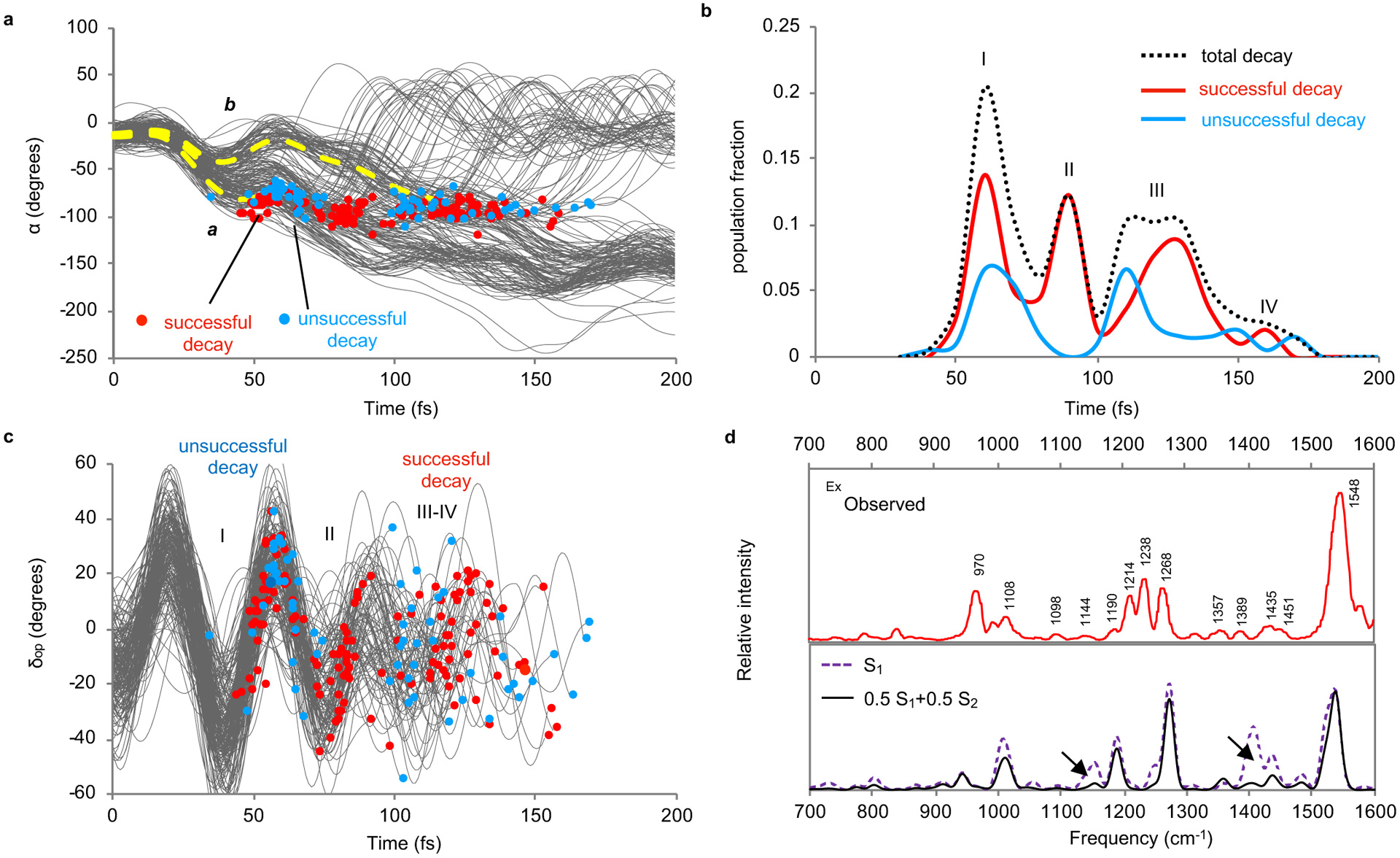Fig. 2. Rh population dynamics.

(a) Time progression of α along a set of 200 trajectories simulating the S1 population at room temperature and showing a motion initially coherent over the statistical ensemble21. The circles represent decays from S1 to S0. The splitting dashed curve in yellow serve as eye guidance tracing fast (a) and slow (b) decaying subpopulations. (b) Oscillatory character of the simulated S1 population decay for both successful and unsuccessful trajectories. The four peaks have been resolved on the basis of the assumption that the standard deviation with respect to the average decay time of the peak has to be <10±1 fs. (c) Time progression of δop along the same trajectories. (d) Effect of the involvement of the S2 state on the simulated resonance Raman spectrum. Top panel: Experimental spectrum.22 Bottom panel: Comparison between the resonance Raman spectra simulated using the S1 gradient and using an equal mixture of S1 and S2 gradients according to the weighted-gradients method.23 The arrows point at regions requiring both states for being correctly described.
